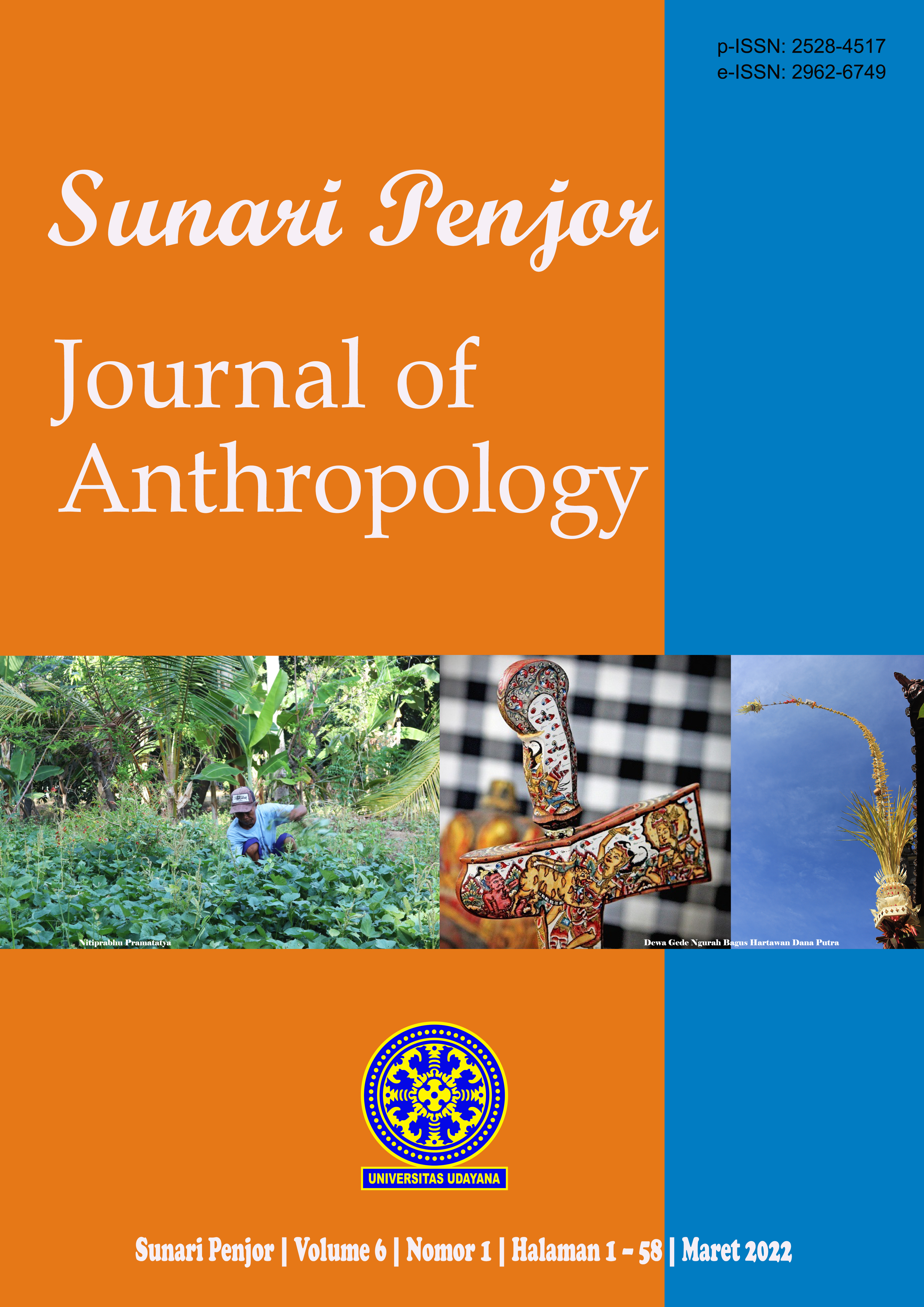Partisipasi Masyarakat dalam Pengembangan Desa Wisata Tampaksiring di Kabupaten Gianyar, Bali
Abstract
A tourism village is one kind of tourism that offers tourism potential owned by a village. Tampaksiring Village is one of the villages that had becoming a tourism village in Gianyar Regency, Bali. One of the concepts in the development of tourist villages is community-based development which focuses on local community participation. Thus, it is to be expected that the benefits of tourism will be more for the local community as the legal owner of the resources. This study aims to 1) identify and explain the profile of tourism potential in Tampaksiring Tourism Village, 2) explain the community participation in the development of Tampaksiring Tourism Village, 3) explain the implications of the development of Tampaksiring Tourism Village. This study uses a qualitative method. Data collection is done through observation, interviews, literature studies, and document studies both online or offline. The theory used to analyze the problem in this study is the theory of participation and the theory of tourism impact. The results of this study indicate that the Tampaksiring Tourism Village has a variety of tourism potentials that can be developed as a tourist attraction. Local communities have a role in the planning, implementation, management, and evaluation processes in the development of tourism villages. Tourism activities in the Tampaksiring Tourism Village also have both positive and negative impacts on economic, socio-cultural, and environmental aspects.
Downloads
References
Dewi, M.H.U., Fandeli, C., dan Baiquni, M. (2013). “Pengembangan Desa Wisata Berbasis Partisipasi Masyarakat Lokal di Desa Wisata Jatiluwih”. Kawistara: Jurnal Ilmiah Sosial dan Humaniora, 3(2), pp. 117-226. https://doi.org/10.22146/kawistara.3976
Kilasbali.com. (2020, Agustus 12). “Gianyar Tambah 4 Desa Wisata”. https://www.kilasbali.com/gianyar-tambah-4-desa-wisata
Libhi, K.S.S., dan Mahagangga, I.G.A.O. (2016). “Sinergi Desa Adat dan Pengelola Pariwisata dalam Pengembangan Pariwisata di Desa Wisata Penglipuran Bangli”. Jurnal Destinasi Pariwisata, 4(2), pp. 128-133. https://doi.org/10.24843/JDEPAR.2016.v04.i02.p23
Mill, R.C. (2000). Tourism The International Bussiness. PT Grafindo Persada.
Nabila, A.R. dan Tri, Y. (2016). “Analisis Partisipasi Masyarakat Dalam Pengembangan Desa Wisata Kandri Kota Semarang”. Jurnal of Public Policy and Management Rivew, 5(3), pp. 1-20. https://doi.org/10.14710/jppmr.v5i3.12543
Peraturan Bupati Gianyar Nomor 127 Tahun 2016 tentang Tata Cara Penetapan Desa Wisata di Kabupaten Gianyar.
Pujaastawa, I.B.G. (2019). Antropologi Pariwisata. Pustaka Larasan.
Rahayu, I. (2012). “Dampak Penyelenggaraan Event Pariwisata Dragon Boat Race Di Kota Tanjungpinang”. JUMPA: Jurnal Master Pariwisata, 5(1), pp. 211-226. https://doi.org/10.24843/JUMPA.2018.v05.i01.p11
Sudibya, B. (2018). “Wisata Desa dan Desa Wisata”. Jurnal Bali Membangun Bali, 1(1), pp. 22-26. https://doi.org/10.51172/jbmb.v1i1.8
Unas.ac.id. (2021). “Desa Wisata Diprediksi Menjadi Destinasi Tren Pariwisata Baru Di Tengah Pandemi Covid-19”. https://www.unas.ac.id/berita/desa-wisata-diprediksi-menjadi-destinasi-tren-pariwisata-baru-di-tengah-pandemi-covid-19/
Undang-Undang Republik Indonesia Nomor 10 Tahun 2009 tentang Kepariwisataan.














